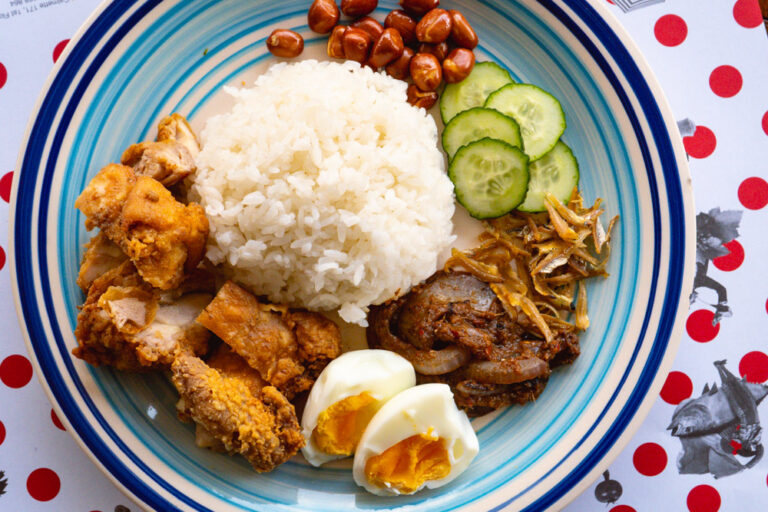Introduction: Malaysian cuisine and its diversity
Malaysia is known for its diverse and mouth-watering cuisine that reflects its multicultural heritage. The country’s cuisine is a fusion of Malay, Chinese, Indian, and indigenous flavors. Due to the country’s geography, Malaysian cuisine varies significantly from region to region. The country is divided into two parts: Peninsular Malaysia and East Malaysia. Each region has its own unique cuisine, which is influenced by its geographical location, history, and cultural identity.
The influence of geography on Malaysian cuisine
The geography of Malaysia has a significant influence on its cuisine. Peninsular Malaysia is situated between Thailand and Singapore and is known for its spicy and aromatic flavors. On the other hand, East Malaysia is located on the island of Borneo and is known for its seafood-based cuisine. The country’s diverse landscape also influences its cuisine. For example, the coastal regions are known for their seafood dishes, while the mountainous areas are famous for their vegetable-based dishes.
Malay Peninsula cuisine: distinctiveness and flavors
Malay Peninsula cuisine is the most well-known cuisine in Malaysia. It is characterized by its rich and aromatic flavors. The cuisine includes dishes such as Nasi Lemak, Rendang, and Satay. These dishes are made using a blend of spices, including lemongrass, galangal, and turmeric. Malay cuisine also incorporates a lot of seafood, coconut milk, and rice. The use of fresh herbs and spices is what makes Malay Peninsula cuisine unique and flavorful.
East Malaysian cuisine: diverse, complex, and unique
East Malaysian cuisine is diverse and complex, with a wide range of dishes. The cuisine is influenced by the indigenous Dayak and Iban people, who use ingredients such as wild vegetables and herbs. East Malaysian cuisine is also heavily influenced by neighboring countries such as Indonesia and the Philippines. Some of the famous East Malaysian dishes include Sarawak Laksa, Bubur Pedas, and Ambuyat. The cuisine is known for its unique and complex flavors, which are a result of its diverse cultural influences.
Chinese and Indian influences in Malaysian cuisine
Chinese and Indian influences are also evident in Malaysian cuisine. These communities have been living in Malaysia for generations, and their cuisine has become an integral part of Malaysian cuisine. Chinese cuisine has a significant influence on Malaysian cuisine, with dishes such as Hokkien Mee, Char Kuey Teow, and Bak Kut Teh being popular in Malaysia. Indian cuisine, on the other hand, is known for its curries, rotis, and biryanis. The use of spices and herbs is what makes these cuisines unique and flavorful.
The role of migration and globalization in Malaysian cuisine
Migration and globalization have also played a significant role in shaping Malaysian cuisine. Malaysia has a large population of immigrants, and their cuisine has become a part of Malaysian cuisine. For example, Middle Eastern cuisine, such as Shawarma and Kebabs, is now widely available in Malaysia. Western cuisine is also becoming popular, with fast-food chains such as McDonald’s and KFC being a common sight. The availability of international cuisine has made Malaysia a culinary hub, with a diverse range of dishes being available to locals and tourists alike.
In conclusion, Malaysian cuisine is a reflection of the country’s diversity and multicultural heritage. The cuisine varies significantly from region to region, with each region having its own unique flavors and dishes. The use of fresh herbs and spices, along with the influence of neighboring countries, has made Malaysian cuisine unique and flavorful. The role of migration and globalization has also made Malaysian cuisine diverse and exciting, with a wide range of dishes available to satisfy any palate.

